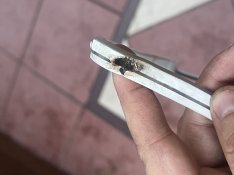Hi all,
As everything from air seeder tube to hula hoop tubing has gone up massively in price, I'm thinking of buying IP65/67 strips lights to make my arches this year. It's more expensive per pixel but I'm hoping not too bad when factoring in that I don't have to buy the tube.
I have a couple of questions about this sort of strip light stuff (never used it before):
Any other advice on anything would be appreciated
thanks!
As everything from air seeder tube to hula hoop tubing has gone up massively in price, I'm thinking of buying IP65/67 strips lights to make my arches this year. It's more expensive per pixel but I'm hoping not too bad when factoring in that I don't have to buy the tube.
I have a couple of questions about this sort of strip light stuff (never used it before):
- what do you think about using it out in the tropical rain? I can waterproof the ends but hoping the tube itself is fine as-is
- I think they're saying $9.50/m for 5m rolls so that's $47.50 per roll?
- it says 60 LEDs/m, but I'm assuming that's per-colour, which would be 5cm spacing. Are the different colours spaced out or 3 together like a node? Does this look OK for arches when mixing colours together?
Any other advice on anything would be appreciated
thanks!


